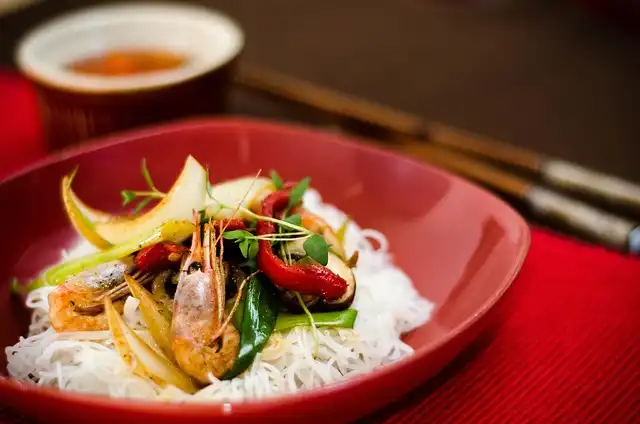London’s Evolving Turkish Cuisine: A Culinary Renaissance

London's Turkish food scene is flourishing, with chefs modernizing traditional cuisine. From Green Lanes to Soho, discover innovative dishes & cultural fusion, moving beyond kebabs to a culinary renaissance.
Turkish dining establishments have long had a garrison in North London– from traditional kebab shops to crackling grill houses– however current years have actually seen a wave of cooks consider what’s following for the neighborhood and its cuisine
Turkish Culinary Heritage in London
After years of Turkish dining establishments not being given the very same weight as other a lot more Euro-centric counterparts– frequently considered more of an affordable consume than a raised dining experience– Ferhat states, there is much less of a requirement to prove their worth. The history of the Turkish community in London goes back to the 1960s, partially driven by the collapse of the textile sector, which led resourceful Turkish-Cypriots, Kurds, and Turks to see chance in an untapped corner of the dining establishment sector. Found in Soho, where there are less Turkish restaurants than in the north of London, Yeni stays an outlier in its neighbourhood, however the audience ranges from restaurants hailing from Turkey to “Londoners and clients from all over the world,” claims Emergency room.
“I believe the Turkish populace is increasingly open to presenting aspects of our cuisine that surpass [kebabs]– which is an excellent thing when done right– because there is a lot more to Turkish society,” claims Ferhat. After decades of Turkish dining establishments not being approved the very same weight as other much more Euro-centric equivalents– commonly thought about more of a low-cost consume than an elevated dining experience– Ferhat states, there is much less of a need to confirm their well worth. Probably, partially, since the British taste buds has actually come to be a lot more open-minded. “It’s an interesting minute for Turkish food due to the fact that the understanding is altering,” he states. “We no more need to sell ourselves short by charging less to be friendly and accommodating, which belongs to our culture and our self-respect, however additionally anticipated of us. You don’t see Spanish restaurants offering complimentary bread or cost-free white wine. We need to continue to be certain in our cuisine.”
Take a stroll along Environment-friendly Lanes, a relatively nondescript stretch of major roadway that slices through northeast London, and the aroma of smoky charcoal quickly comes to be intoxicating. Any type of Londoner well versed in their city’s social material recognizes that the burning of the mangal grills below is an item of living, edible, background– and one connected to years of Turkish and Kurdish movement to the resources.
Mangal 1: A Cultural Hub
Some locations continue to be unmodified, though. Stroll into the initial Mangal 1 on a Friday evening and you’ll still find people from all profession resting shoulder to shoulder, kilims hung on the wall behind them, weighing up whether to order the lamb shish or the Adana köfte. Gilbert & George will certainly still be there early for dinner, and pubgoers will certainly be walking in late for a kebab after last call. It’s not as well various a scene from the ones Ferhat remembers of his childhood spent running around the restaurant in the 1990s, his daddy regulating the program. “It was split 50/50 between Turkish households and non-Turkish locals– great deals of people from the art scene and the LGBTQ+ neighborhood. There was this lovely mesh of cultures,” he states. “It was always extremely London.”
I first experienced this side of London at age 13, on New Year’s Eve– an evening noted by the abundant flavours of a lamb kebab my moms and dads purchased and a rowdy waitress that drank a lot that he tried to raise a table up with his teeth. We still discuss that steward to today, yet or else, nothing really felt exceptional concerning being one more Turkish-British household in London, bidding process farewell to one year and encouragingly raising our glasses to the next. My father is initially from Adana in the south, and like lots of youngsters of a diaspora, it’s taken me a very long time to establish an interest concerning the side of myself I didn’t feel rooted in. On current sees to Istanbul, I’ve begun linking the city’s contemporary identification keeping that of my own, however time and range from London have permitted me to see that cultural examples were never ever far from home. The Turkish neighborhood in London prolongs much past Eco-friendly Lanes, as well, down right into Dalston– and currently, a breadth of new flavours has actually arised, many thanks to a proliferation of modern Turkish restaurants over the last few years.
New Flavors Emerge
In a storyline that could have been ripped straight from The Bear, he and his cook brother, Sertaç, in 2021 tackled the challenge of changing a family-run dining establishment valued by citizens for its uniformity (artists Gilbert & George notoriously had supper there every night, only switching over to the original, currently called Mangal 1, after the brothers “installed a music system”) and laid out to develop a more refined menu that mirrored the new age of Turkish cuisine they were seeing on their journeys to Istanbul and various other components of the country. The menu still keeps a lot of knowledge (pickles and smoked hummus in a swimming pool of olive oil; red pepper dolma and yogurt) however custom is now served with a pinch of advancement: healed mackerel, captured in British waters, is splashed with sharp Anatolian tastes; mutton koftë sits atop grilled apple; cornish poultry is packed with garlic and Aleppo-spiced sausage.
“I enjoy Yeni,” says Ali Yalçın, who frequently often visits Er’s restaurant, along with The Counter, a little plate spot with areas in Soho and Notting Hill. And for a north London classic, he advises “Üstün on Newington Environment-friendly for the pide and lahmacun.”
Ferhat Dirik loves to go to 01 Adana, which serves a hearty lineup of lamb and hen kebabs in addition to things like lamb liver over rice and quails grilled on a skewer: “It’s partly because my papa initially functioned there when he moved to the UK, yet mainly because it’s scrumptious. I’m always food craving and searching for those flavors.” And he always quits at “Haringey Corbacisi in Environment-friendly Lanes for soups and covers.”
The Turkish area in London prolongs far past Eco-friendly Lanes, also, down into Dalston– and now, a breadth of new flavours has actually emerged, thanks to a spreading of modern Turkish dining establishments in current years.
Whether that means bringing in Aegean olive oil provider Joila to provide the base for a spirited pintxo evening, or lokum purveyor Marsel Thrills for a fresh take on the Turkish morning meal, the trio are using Dükkan to not simply shine a light on the Turkish cuisine of the existing, but consider what the future could look– specifically with the self-confidence to avoid certain cultural assumptions over what the food is expected to be.
Dükkan: A Culinary Experiment
Ferhat Dirik, that runs Mangal II in Dalston, is an additional second-generation immigrant who has actually just recently started building a course to comprehend his very own heritage– although his trip has actually been even more pre-determined than mine. The kid of Ali Dirik, a chef who relocated from Anatolia in the 1980s and opened up Mangal Ocakbaşı (named after the standard charcoal food preparation approach), complied with by Mangal II in 1994, Ferhat took control of the procedures of the last in 2015 and started to tangle himself with Turkish cuisine in a deeper means. “For many years I had travelled anywhere however Turkey,” he says. “Perhaps it was an age thing, possibly it was an identity point. After that, certainly, I discovered that Istanbul is the most effective city in the world, and there are lots of Turks there that share the same worths and suitables as Londoners. The more I realised that, the extra connected I really felt.”
“Ridley Road Market is a real market in London with some Turkish greengrocers,” says Civan Emergency room. He additionally gets newly baked simit at Akdeniz Bakery in Stoke Newington and never misses out on the lahmacun at Antepliler in Haringey or pleasant deals with at Bebek Baclava in Dalston.
Established by Mustafa Yılmaz, Ali Yalçın, and Elif Gengor, Dükkan is much less a traditional restaurant, and a lot more a speculative area for organizing supper clubs and pop-ups that celebrate Turkish food and drink culture. Feelings are thoroughly curated: a custom-made playlist acts as a soundtrack to evenings cultivated by visitors like Turkish-Cypriot cook Meliz Berg or Lokanta Tokyo, a culinary project that fuses Turkish lokanta-style (the word utilized for home prepared) cuisine with Japanese active ingredients and methods; and the tiled white-and-green wall surfaces are reminiscent of several an Istanbul dining establishment, while custom-made menus and flyers act as keepsakes from an occasion. “We assumed we can really help chefs breed their concepts by collaborating with them, and produce a community along the method.”
Gengor notes that “Londoners, and not simply those of Turkish heritage, are now becoming aware that there is more to Turkish food than they have actually tasted previously, and they want to experiment with it and try brand-new points.” Whether that means generating Aegean olive oil carrier Joila to offer the base for a lively pintxo evening, or lokum purveyor Marsel Thrills for a fresh take on the Turkish breakfast, the trio are using Dükkan to not just shine a light on the Turkish food of the present, yet consider what the future might look– especially with the self-confidence to shun certain social expectations over what the food is expected to be. “We are pleasantly disrespecting some Turkish traditions and reimagining how the food can be prepared,” says Yalçın.
Situated in Soho, where there are less Turkish dining establishments than in the north of London, Yeni continues to be an outlier in its neighbourhood, however the target market ranges from restaurants hailing from Turkey to “Londoners and clientele from all over the world,” states Emergency room.
A New Generation of Chefs
The background of the Turkish neighborhood in London goes back to the 1960s, partly driven by the collapse of the fabric market, which led resourceful Turkish-Cypriots, Kurds, and Turks to see possibility in an untapped edge of the dining establishment sector. Currently, a new generation of chefs are moving to the UK as recessions and political instability in Turkey develop obstacles to their job. Civan Emergency room, that established Istanbul-based Yeni Lokanta (a Beyoğlu restaurant famous for its mantı), moved to London in 2021 to open his 2nd location. Just like Ferhat, Emergency room and his team take typical Turkish cooking strategies and fuse them with locally-sourced ingredients (though he confesses that he still acquires his seasonings in Turkey and brings them back in his baggage). Case in point: Orkney scallops are offered along with spicy almond muhammara; veal sweetbreads and Karaağac chilis from Erdine in northwestern Turkey rest alongside on a plate.
1 cultural fusion2 Green Lanes
3 London food
4 modern dining
5 Turkish cuisine
6 Turkish restaurants
« JFK Airport’s Hidden Gems: Lounges, Rooftops & Pet HavensAirline Pilot De-escalates Flight Situation with Kindness »
